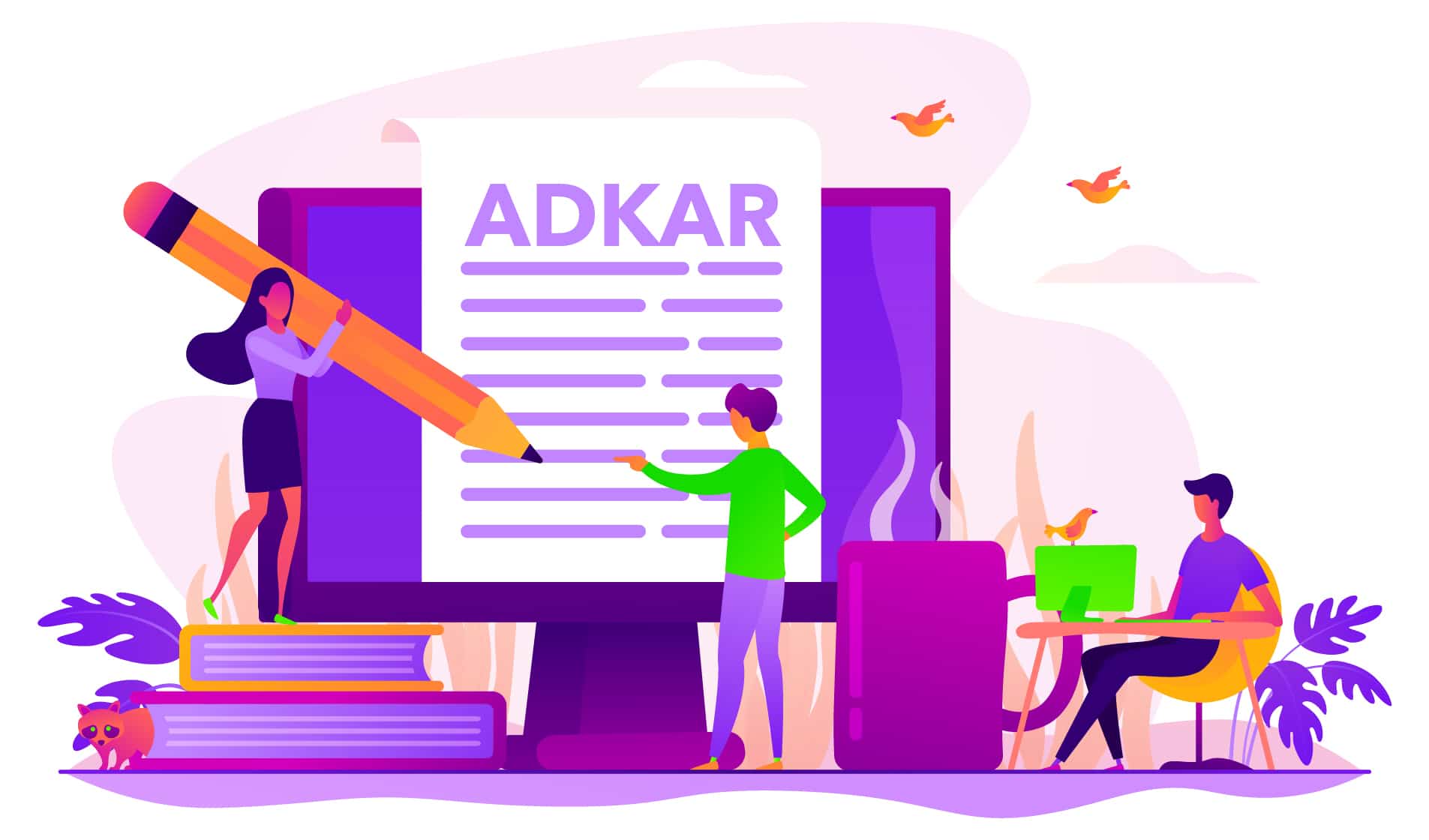Share on facebook
Facebook
Share on twitter
Twitter
Share on linkedin
LinkedIn
Share on email
Email

The ADKARⓇ model is a methodology commonly used for change management strategy in corporate settings. Created by Prosci founder Jeff Hiatt, the ADKAR model represents five tenets for successful change: Awareness, Desire, Knowledge, Ability, and Reinforcement.
Viewed through a lens of instructional storytelling, the ADKAR model can help you define your goals and create a clearer picture of what success should look like for your learners, resulting in meaningful connections with the material and better retention.
Here’s how the ADKAR model can be adapted for strategic storytelling:
- Awareness: Identifying the problem and need for change is the first step. Build curiosity for your learner by highlighting the current status quo and why it needs to change as part of the catalyst for their story.
- Desire: This is the part of the story where learners catch sight of how their training could change things for the better. By tapping into your learners’ wants and needs, you can build a story around where they are now and where they could be. Get personal and remember that your learners are individuals. They want to know what’s in it for them.
- Knowledge: Knowledge shows your learners how to accomplish their goals, even if they’re not applying that knowledge just yet. The best way to offer knowledge is to pace it properly: give a little and leave your learners wanting more, and use the rules of emotional engagement to keep them focused.
- Ability. You want your learners to apply their newfound knowledge in a safe way. The first chance they get should be pretty easy; the hero in a video game never faces the dragon right off the bat, right? Smaller challenges give learners the chance to test their ability, practice new skills and build confidence.
- Reinforcement: Finally, challenges should become incrementally harder and transition from practice to on-the-job execution. The learner reaches the end of the story, finally faces what once seemed insurmountable, and rises triumphant (thanks to the intentionality of the lessons and skills learned along the way, of course).
We recommend adding two additional facets to a successful change initiative: reconfirm and reward. These are the celebratory moments at the end of the story that let the protagonist know they’ve done the right thing and will be rewarded for continuing to commit to the change.
The ADKAR model provides a template for properly pacing your story, building engagement, and offering the right reward for your learners’ attention, ensuring that your learners never lose focus of their goal.





